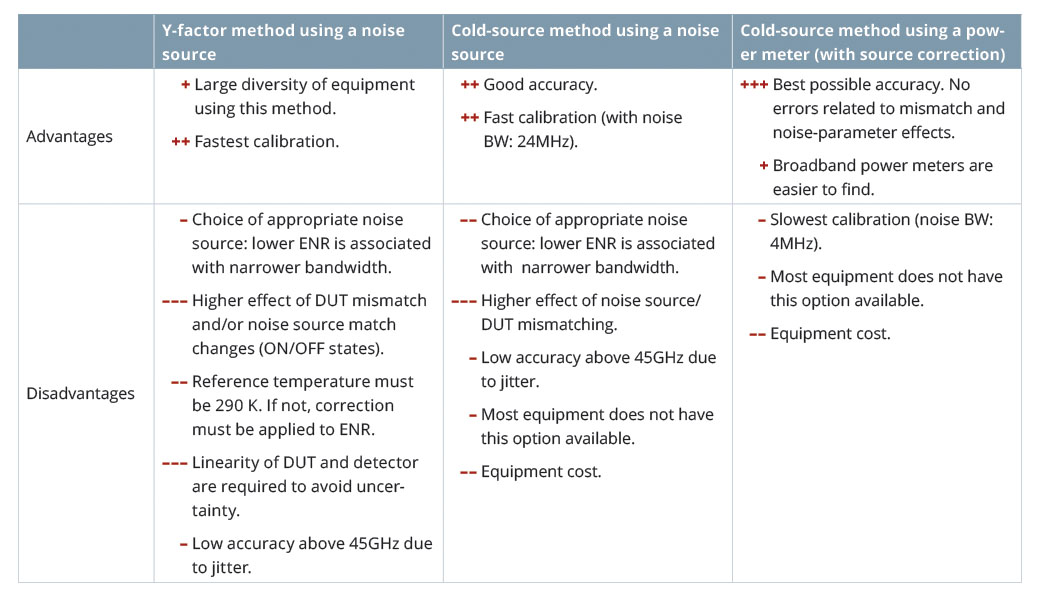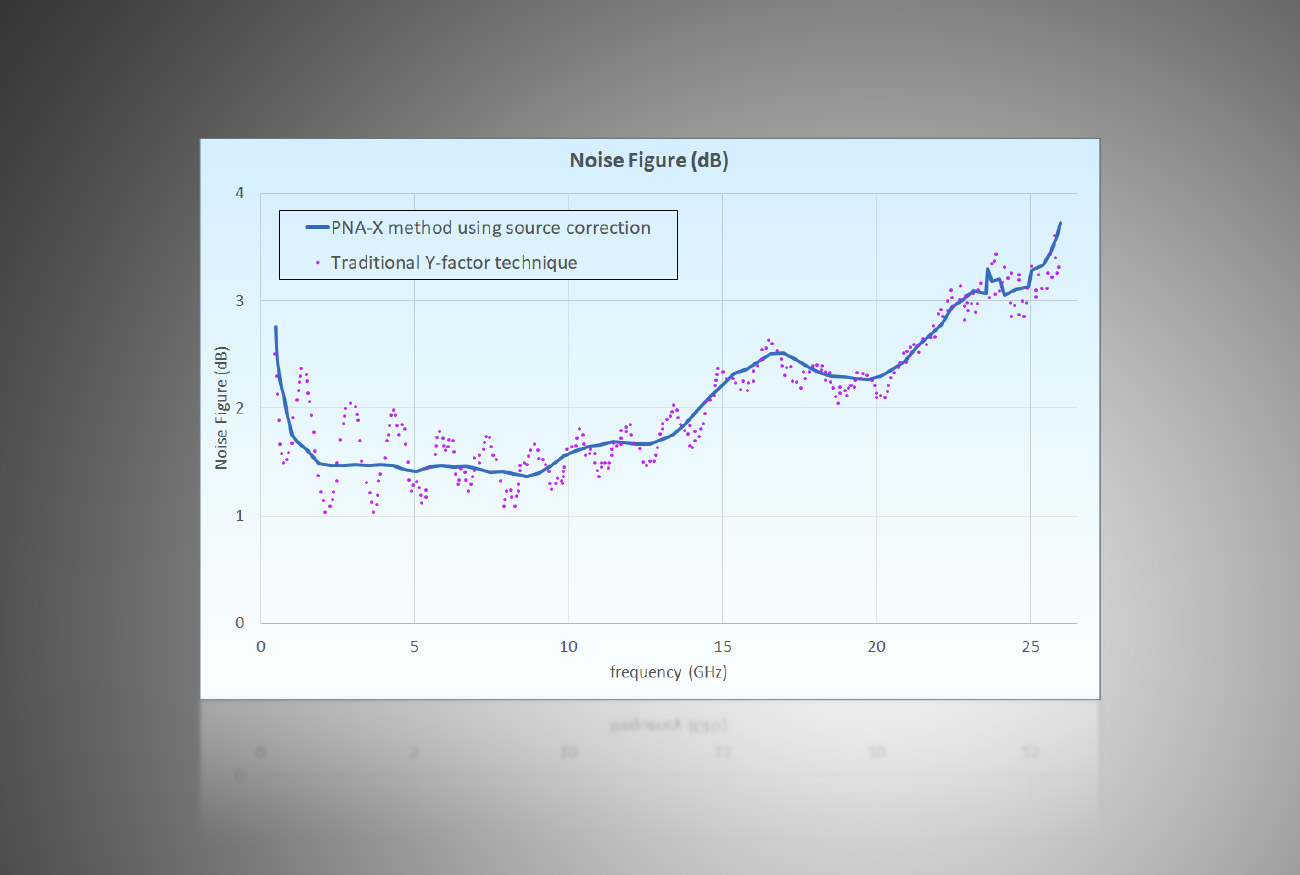Posted: Monday, August 2, 2021
There are several methods for making noise figure (NF) measurements of RF, microwave, and millimeter-wave low noise amplifiers (LNAs), each with a wide number of options, instruments, and techniques. In a recent Tech Brief, Erzia reviews how we came up with an approach using standard laboratory equipment that can easily be followed by trained personnel working at higher frequencies to obtain optimal NF data.
First, we explored the Y-Factor technique. Y-factor is one of the most popular methodologies used to measure the noise figure of an RF device. Its relative simplicity and fast calibration make this a preferred technique when measuring the noise figures of components in systems with relatively high NF values, and/or when extreme levels of accuracy are not critical. However, the effect of the device under test (DUT) input matching (usually due to inconsistent LNA values) and lower accuracy at higher frequencies make the Y-factor technique a poor candidate for testing noise above 18 GHz (K-band).
At K-band and above, Erzia has determined that the preferred technique for measuring LNAs is the coldsource method. While it requires the use of a power meter for maximum accuracy at the calibration step (as opposed to a noise source), the result is optimized matching of the calibration device and the DUT.
The cold-source method, using a power meter during calibration and a source-correction technique, provides incredibly accurate data on devices that operate at both narrow and wide bands above 18 GHz. The drawbacks of the cold-source technique, however, are that calibration is slower, and the equipment cost is significantly higher, than the Y-factor method.
The advantages and disadvantages of each are compared in this chart for reference and consideration in your own RF/microwave applications:

To learn more, download our Tech Brief “Accurate Noise Figure Measurement in ERZIA K/Ka-Band Low Noise Amplifiers for Satcom Applications”

Share
